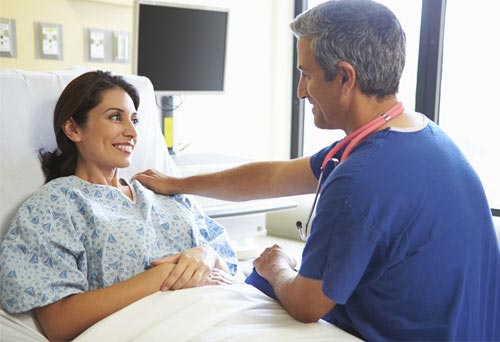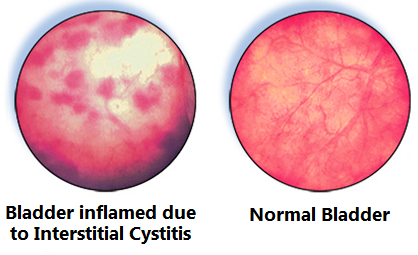Annual UDS or Annual Ultrasound in Neurogenic Bladder?
Topics: Urodynamics Testing, General Urology Information, Neurogenic Bladder, urology, Ultasound
UDS After Female Incontinence Surgery: Who, When and Why?
One of the most vexing clinical situations happens to be one of the best uses of urodynamics (UDS): ongoing symptoms after female incontinence surgery. These cases are challenging and patients are often not happy to have ongoing symptoms, new symptoms or worsening symptoms; however, appropriately utilized and interpreted, UDS can be key to helping these patients.
Topics: Urodynamics Testing, urodynamics, incontinence, Post-Operative Urodynamics
The topic of urodynamic studies (UDS) before prolapse surgery is highly debated in urogynecology. There have been previous studies conducted on women who had prolapse and uncomplicated stress urinary incontinence (SUI). Currently, there is no possibility of a universal consensus for UDS before prolapse surgery in women who have concomitant symptomatic SUI. The issue is that there is currently no evidence that the surgery outcome will be altered or not by being given a UDS. Thus, we must test further using randomized studies to advance and see if UDS can be useful before prolapse surgery.
Preoperative UDS Should Be Performed
If a patient with a pelvic organ prolapse (POP) has either stages IIIa, IIc, or lp, she is more likely to have symptomatic vaginal bulging and asymptomatic for stress or urgency incontinence. This case is just one example of where preoperative USD should be performed before the prolapse surgery. It’s been found that POP and lower urinary tract symptoms (LUTS) usually coexist with each other. But, UDS involve objective assessments of any dysfunction in the urinary tract system. Some UDS could prevent and save people from POP. However, not many are willing to perform this option.
Topics: Urodynamics Testing, urodynamics, pelvic organ prolapse
Urodynamic practices should be consistent throughout every medical practice. However, you will find that they often vary depending on clinics, companies, and between countries. This can often lead to procedures being uncomfortable and unnatural for patients, as there isn’t a set standard for explaining or performing the urodynamic testing. The ICS standardization steering committee has wanted to update the international continence society standard for making urodynamic testing consistent across all practices. They aim to add update and improve on testing through the use of reporting from patients after clinical care.
Patient Information & Preparation for Invasive Urodynamics
Before starting any urodynamic treatment, clinicians should prompt patients for past information, physicals, and prepare for the urodynamic treatment.
Topics: Urodynamics Testing, urodynamics training
Why Urodynamics & UroCuff Tests Are Appropriate For Health Care Today
In the US, over 17 million people suffer from daily urinary incontinence. When discussing the prevalence of incontinence, women are more predisposed to this condition. To get a better grasp on the seriousness of urinary incontinence, take a look at some facts:
- Between the ages of 30 and 59, one in four women has had an episode of urinary incontinence
- More than 50% of elderly people which are living at home or placed in specialized facilities have urinary incontinence
- The good news is that 80% of those affected by urinary incontinence can be cured, or have their life improved.
Topics: Urodynamics Testing, UroCuff
In many instances, urodynamics are performed to diagnose relatively benign lower urinary tract disorders, such as stress urinary incontinence. However, sometimes urodynamics uncovers more serious diseases that require immediate attention, as was the case with Sarah, a 48 year old mother of three from New York. Here, we will share Sarah’s story about unexpectedly finding out she had cervical cancer after a routine urodynamics test.
Topics: Urodynamics Testing
Urodynamics: Travel Time/Distance And Impacts On No-Show Rates
Patients that do not show up for their appointments are a major problem in healthcare. Not only do these no-shows prevent other patients from scheduling appointments, but they put their own health at risk. Frustratingly, they also cost medical practices money, as an absent patient also represents a lost opportunity for revenue – up to $300 per missed appointment. There are many factors that affect no-show rates, including travel time to the doctor’s office. Here, the solution to the all too common problem will be discussed.
Topics: Urodynamics Testing, urodynamics, Medical Practice Operations
Urodynamics testing is as much an art as it is a science. Unfortunately, there are many variables inherent to the way testing takes place that can lead to poor results. Here, how to know whether your urodynamics test results are poor will be discussed.
Topics: Urodynamics Testing, urodynamics, urodynamics interpretation
Spina bifida patients have unique needs related to urologic care due to the nature of this disease. Here, routine urodynamics care for patients with spina bifida will be discussed.
What is Spina Bifida
Spina bifida1 is a birth defect that is characterized by the incomplete closing of the backbone and associated membranes around the spinal cord. While the lower back is the most common location for spina bifida, in rare instances children may experience this disorder in the neck or thoracic spine.
The mildest form of spinal bifida is occulta2, in which children are asymptomatic or have very mild symptoms. In this instance, children commonly have a spot on their back where a gap in the spine is located, such as a dimple, dark spot, swelling, or a hairy patch.
Meingocele is more serious than spina bifida occulta, but generally only causes mild problems due to the sac of fluid that is present at the spinal gap.
Topics: Urodynamics Testing, Pediatric Urodynamics, Spina Bifida
For complicated cases of Interstitial Cystitis, urodynamics testing may be recommended. What is urodynamics and interstitial cystitis? How are urodynamics tests performed, and for whom are they recommended? The answers to these questions will be discussed here.
Topics: Urodynamics Testing, urodynamics, interstitial cystitis










